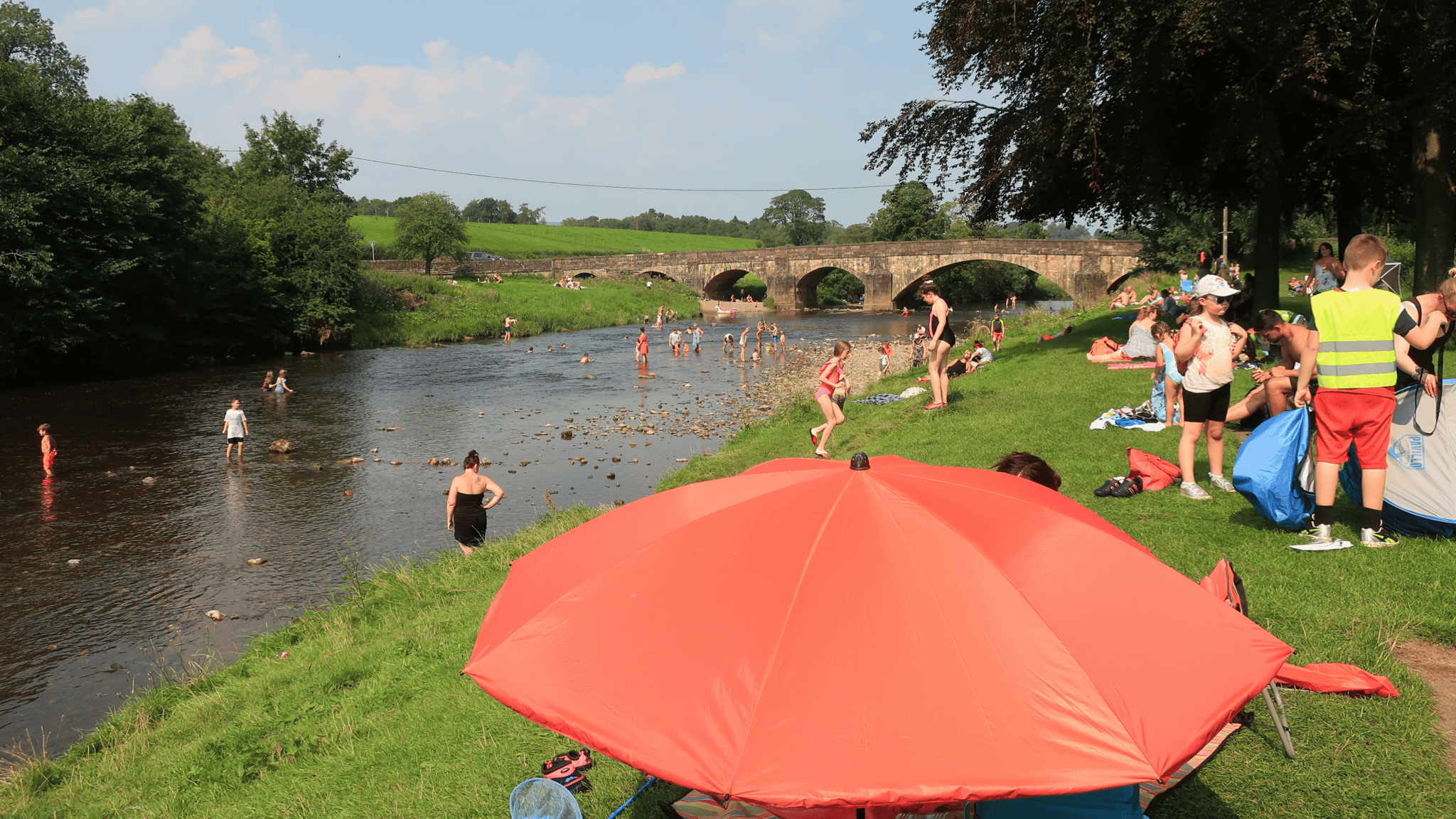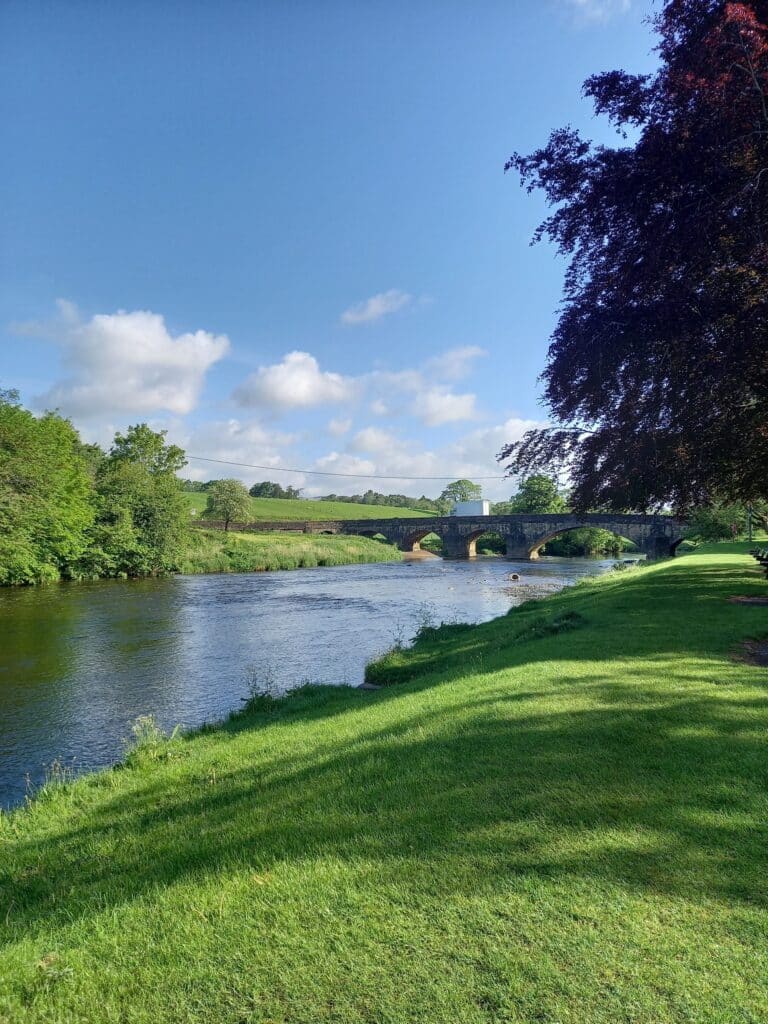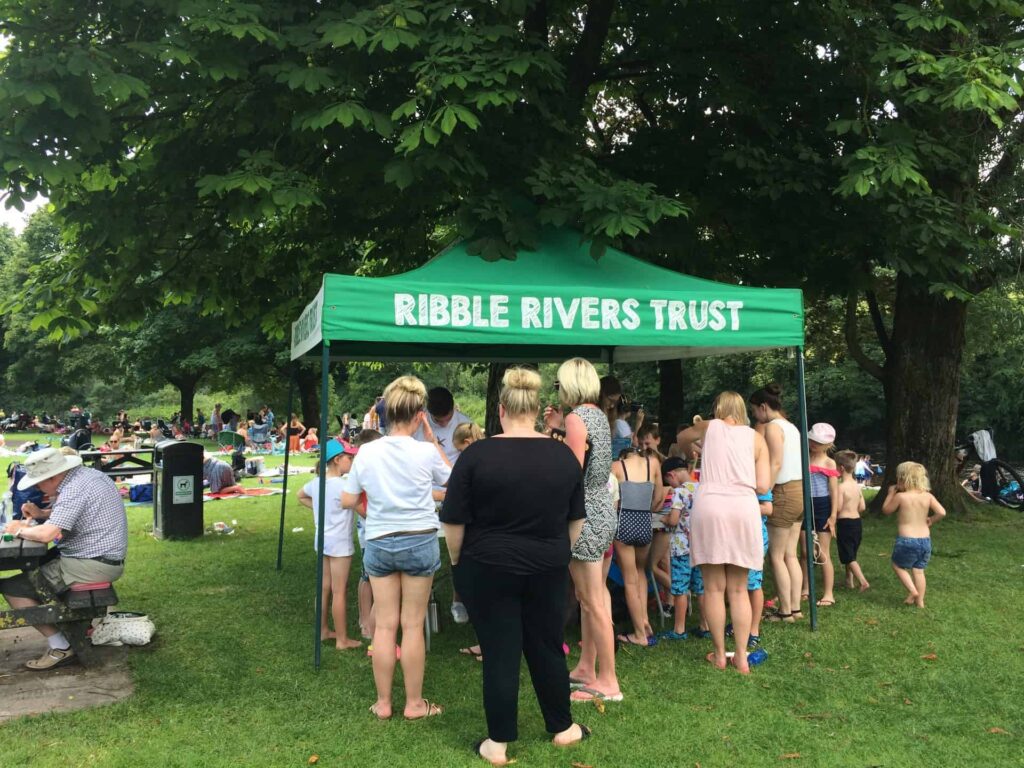In the UK, we have over 600 bathing water sites, but just two of those are inland bathing waters.
Earlier last year Ribble Rivers Trust launched Safe to Splash. Our campaign for bathing water status. Ribble Rivers Trust submitted our application back in October and our aim is to secure bathing water status for a short stretch of the River Ribble where it passes through Clitheroe. The site is known as Edisford Bridge.

Inland bathing waters; what does this mean?
Guidance from gov.uk keeps the definition pretty simple. As a quick summary they state that
“Bathing water is a coastal or inland water that attracts a large number of bathers in relation to any infrastructure or facilities that are provided, or other measures that are taken, to promote bathing at the site.”
In the UK bathing water season runs from the 15th May to the 31st September. Although wild swimming is becoming a popular all-year-round activity, this period is when the majority of people are likely to be using coastal and inland waters to swim.

During this period a team from the Environment Agency collect over 7,000 water samples. Each one is analysed and tested for two types of bacteria: E coli and intestinal enterococci. The nasty bugs come from a wide range of places. These can include livestock waste, human sewage, wild animals, and wild birds like ducks.
When a site gets a desingation, it gets greater protection from these sources of pollution. This means polluters such as utilities companies are obliged to reduce pollution and invest in their infrastructure to protect these sites.
How do you decide if it’s Safe to Splash?
E coli and intestinal enterococci are present in almost all wild waters. However, there is a safe amount. Each bathing water site has its own profile. Using the water samples they analyse, the Environment Agency can provide information on whether or not the water quality is good enough to swim in.
It’s important to note that these designations only protect people from pollution. It doesn’t mean that there are lifeguards, that water levels or flows are safe, or that you have any less chance of having an accident. Always stay safe and check out our water safety advice!
The Environment Agency also used data from the Met Office to look for weather events that may cause pollution incidents. For example, a storm may cause sewage overflows and agricultural run off. So, whilst the latest water samples may be clear, the upcoming storm is likely to cause a spike in pollution.
There are four categories: excellent, good, acceptable, and poor.
You can check these out on the Environment Agency’s Swimfo website. Usually there are also signs at beached displaying the classifications.
Why did you choose Edisford Bridge?
Firstly, it’s already a really popular spot for families to come and walk, paddle, and generally spend a few hours messing about outdoors.
In fact, in the summer months the area is literally jam packed with people from all over Clitheroe, the Ribble Valley, and even nearby towns like Blackburn and Burnley. When we were surveying the area, we regularly counted hundreds number of people on a hot day.
The site’s popularity is one of the main reasons that we decided to apply for Bathing Water Status. It attracts people from a wide range of communities and social demographics. However, thanks to surveys and past experiences, we know that the people visiting this site aren’t necessarily aware of the site’s water quality, river health, or the importance of rivers in the natural world.
By targeting this audience and giving them a safe space to swim, or at least helping to provide information to help them make an informed decision, we can encourage a love for rivers and the wider natural world.

After all, it’s hard to persuade someone to care for and love their rivers if they don’t understand their importance and appreciate the benefits they provide.
Of course, there are additional benefits, in terms of both finance and awareness raising. We hope we will see more investment in drinking and waste water infrastructure, more grant funds for work with local landowners, and more funds to put back into our catchment. Plus, the more people know about their rivers and the wider our audience is, the higher the likelihood that they can be persuaded to take better care of their rivers at home and whilst outdoors.

